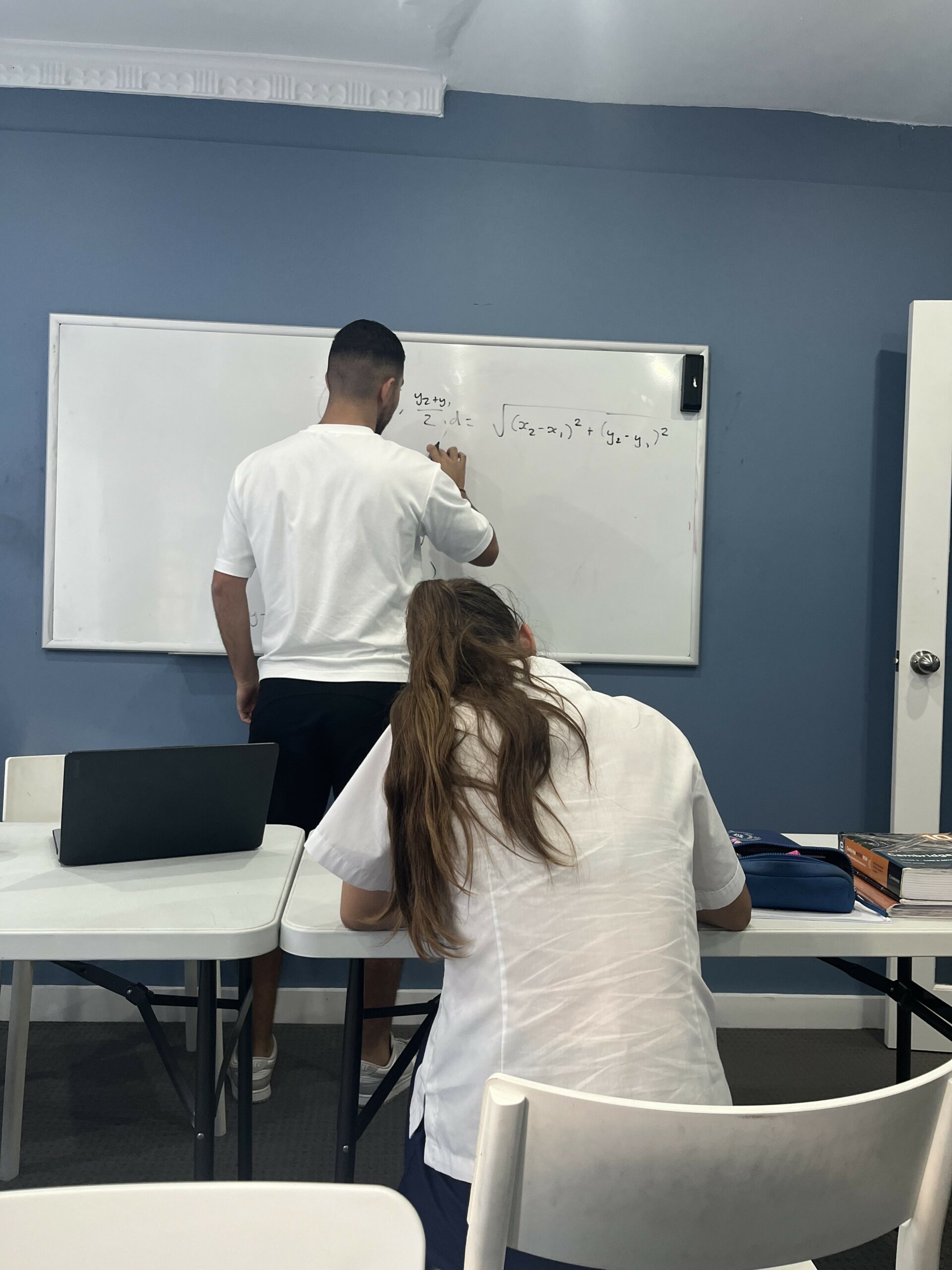
Today, I was able to observe David conducting a detailed revision lesson on the Year 10 5.3 topic: Linear Relationships.
David began the lesson reviewing a worksheet which the student had trouble completing. The worksheet, I noticed, was an extremely effective way of identifying the student’s strengths, weaknesses and queries through an array of practice questions on the specific topic. Each question the student had identified as a weakness David was able to carefully break it down and explain it in simple terms.
Utilising the white board was one way in which he had done this. Recognising that the student had become overwhelmed with the congested page, in which the question and initial working out was presented, David moved the focus to a larger and easier working space on the white board. This decision allowed the student to start the problem solving process again on a clean slate and David to take more time and space in which he was able to explain it.
Another observation I had identified within the session was David’s ability to engage the mind of the student, encouraging them to independently seek to solve the problem through his guidance. Once the student was confronted with a difficulty in the working out process of the question, David was quick and careful to steer the student in the right direction. However, in doing so he was still able to allow the student time to configure a solution by themselves. This strategy is a largely beneficial implementation in David’s tutoring as it allows the student to foster the skills of problem-solving, patience and determination in an academic mindset. Through David’s guidance the student is able to feel more fulfilled as they themselves overcame this specific problem.
David, within his tutoring sessions, makes use of the spaces and tools around him to guide and foster an independent and determined academic mindset within his students.
Paul Diab

